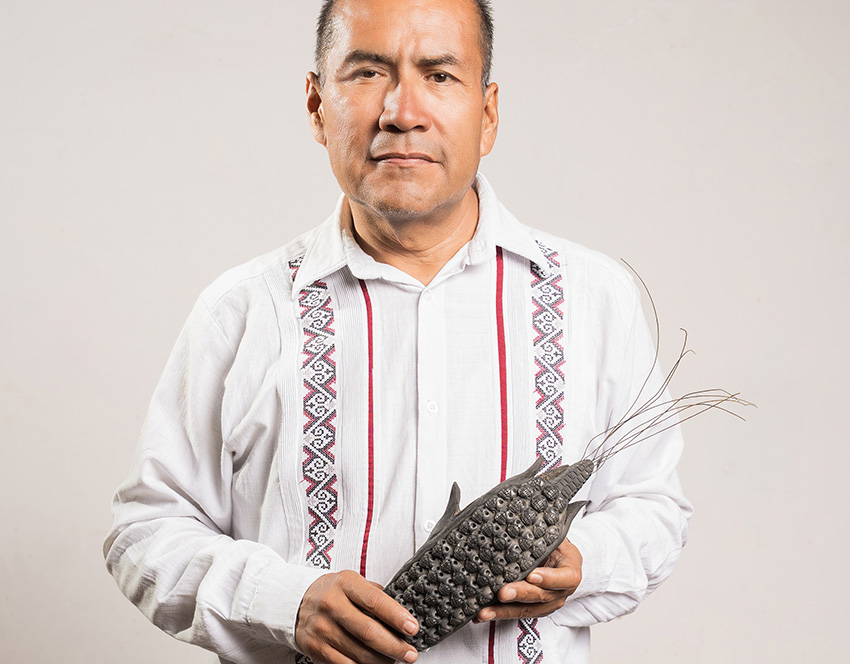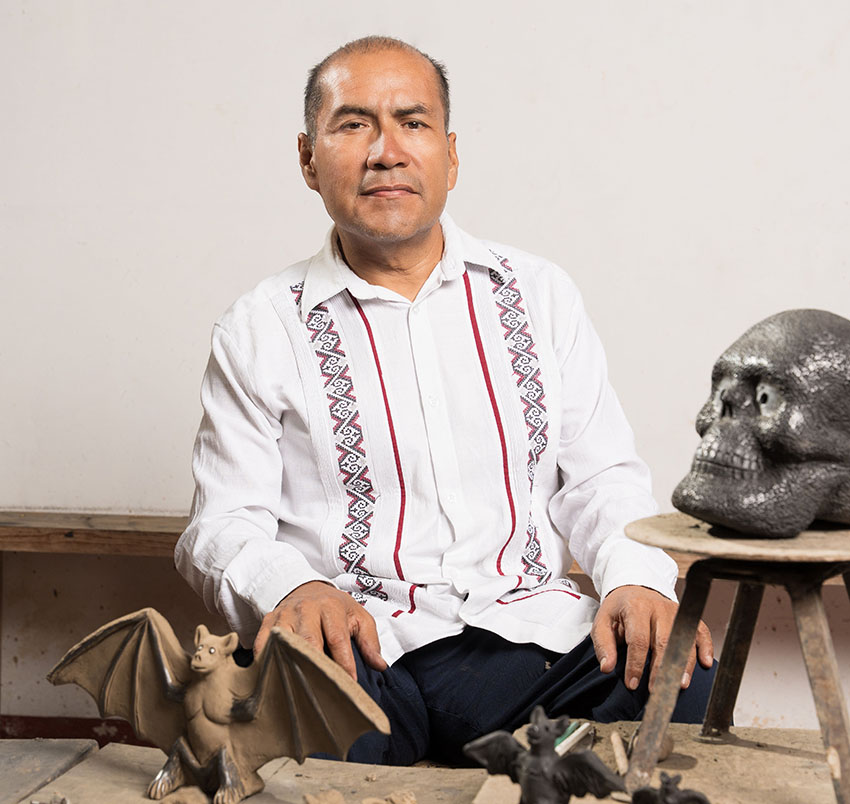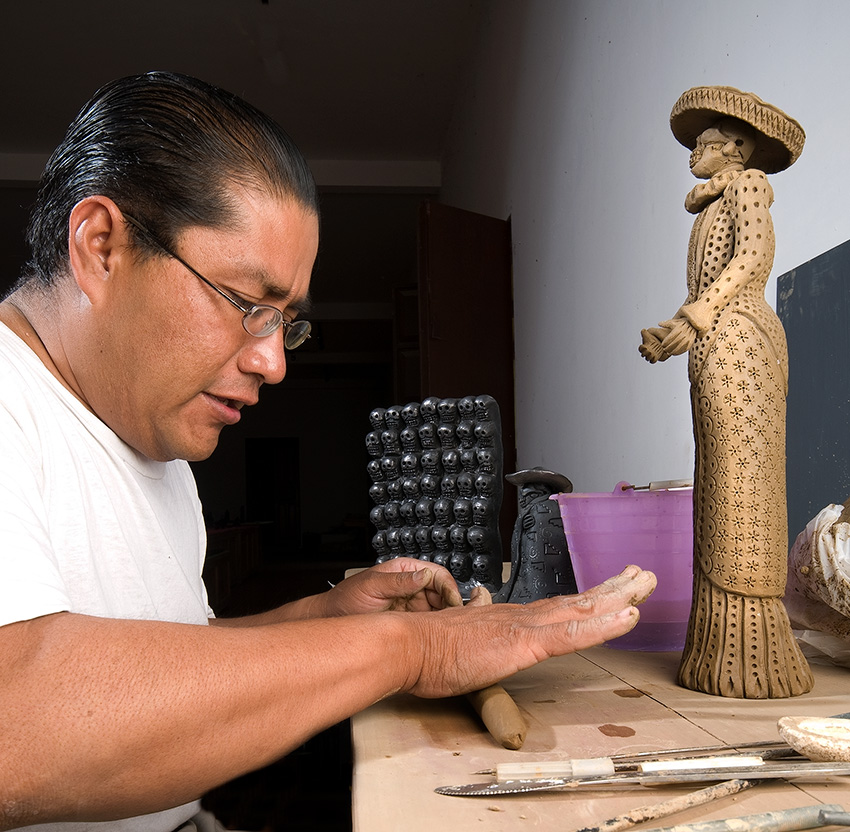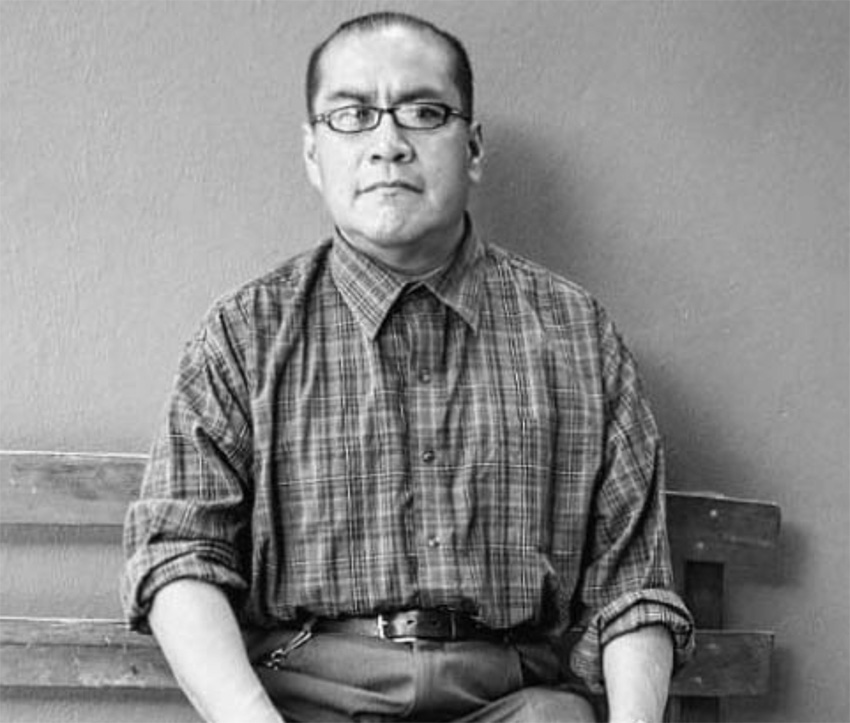Carlo Magno Pedro
Artist
Carlo Magno Pedro
Curator
An Ancestral Lineage of Art
Carlo Magno Pedro’s work is rooted in Oaxaca’s ancient pottery tradition, dating back approximately 4,000 years. Archaeological findings suggest that the community of Zaapeche, now San Bartolo Coyotepec, played a vital role in Mesoamerican ceramics. Excavations in Monte Albán reveal that black clay pottery was developed in these early periods, possibly by artisans from Zaapeche.
Born on August 17, 1965, Carlo grew up in a family of artisans. His father, Antonio Eleazar Pedro Carreño, was a self-taught sculptor, and his mother, Cecilia Martínez Barranco, was a potter. From a young age, he molded clay, learning by observing family members. His natural talent emerged early, crafting figurines inspired by local traditions such as the Day of the Dead.
During the 1960s, as plastic replaced ceramic household items, artisans shifted toward decorative pottery. The rise of tourism in Oaxaca provided a new market for their work, revitalizing interest in traditional techniques. San Bartolo Coyotepec became a hub for researchers and collectors, fostering the preservation of its artistic heritage.
In 1982, Carlo enrolled in the Rufino Tamayo Workshop in Oaxaca City, where he expanded his artistic skills. In 1985, he won first place in the Grand Prize of Popular Art in Tlaquepaque, Jalisco, in the Clay Sculpture category. Two years later, he received the National Youth Award for Popular Art, affirming his growing reputation. His work, often depicting Zapotec traditions through skull figures, became widely recognized.
In 1989, the Museum of Mexican Fine Arts Center in Chicago invited him to exhibit his pieces. That same year, he received a fellowship from the U.S. Embassy, allowing him to present his work internationally. His exhibitions included Los Angeles (1990), San Francisco (1992), St. Louis (1993), Hamburg (1995), Paris (2002), and several U.S. cities (2006–2008).
In 2001, his work was featured in Grandes Maestros del Arte Popular Mexicano, a book showcasing Mexico's most distinguished artists. A major milestone was the establishment of the Museo Estatal de Arte Popular de Oaxaca (MEAPO), which opened on October 2, 2004. The museum, housed in a former school building, became a center for exhibitions, workshops, and cultural events, supporting local artisans and preserving traditional arts.
In 2008, the Alfredo Harp Helú Foundation commissioned Carlo to create a black clay mural for the Baseball Academy in San Bartolo Coyotepec. His contributions to Mexican art were further recognized in 2014 when he received the National Prize for Sciences and Arts in Popular Arts and Traditions.
Today, Mtro. Carlo Pedro is a key figure in preserving Oaxacan artistic traditions. His work represents the rich cultural heritage of the Zapotec people, offering an authentic perspective on indigenous artistry to the world.




